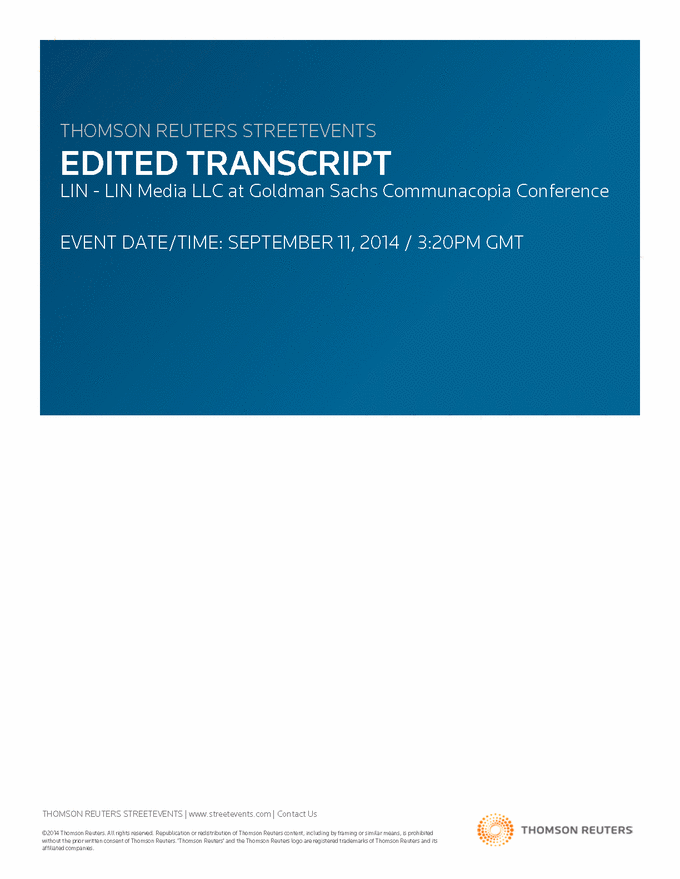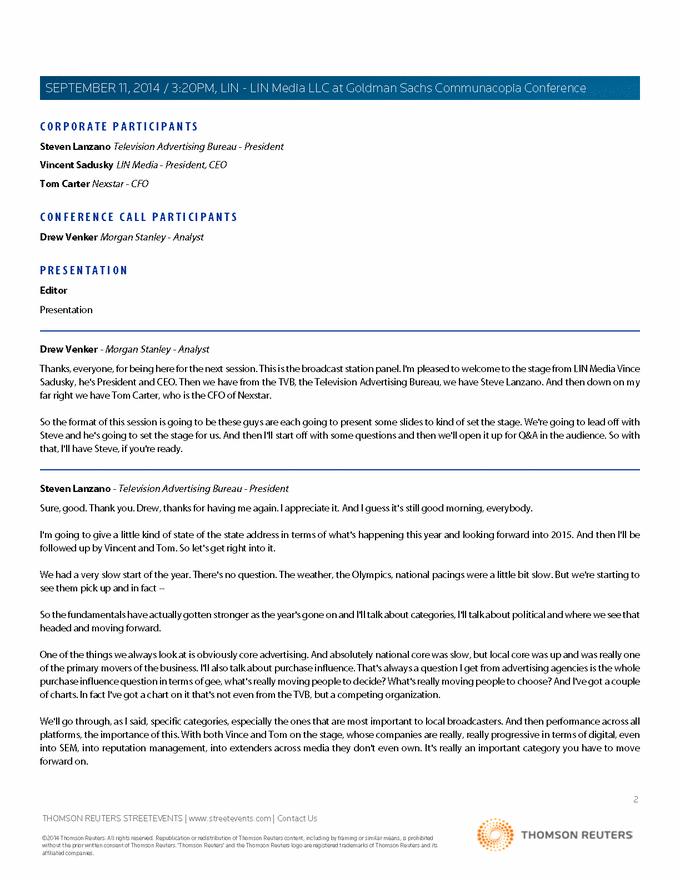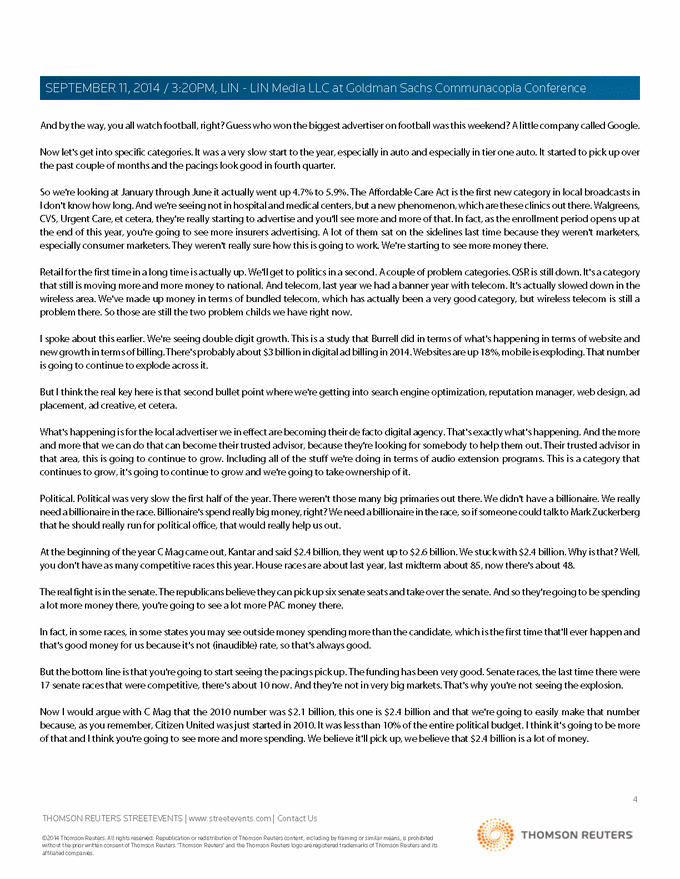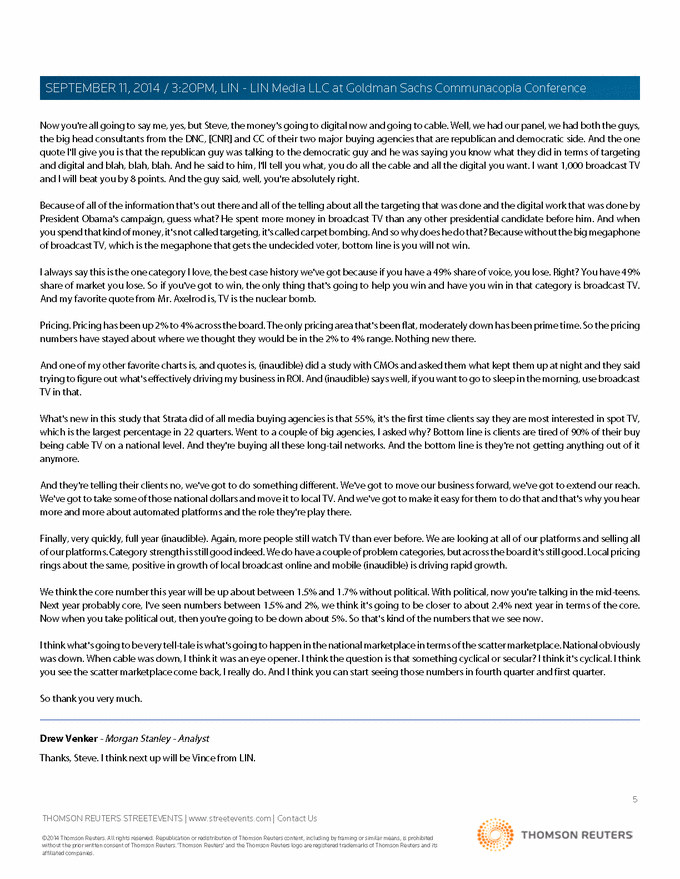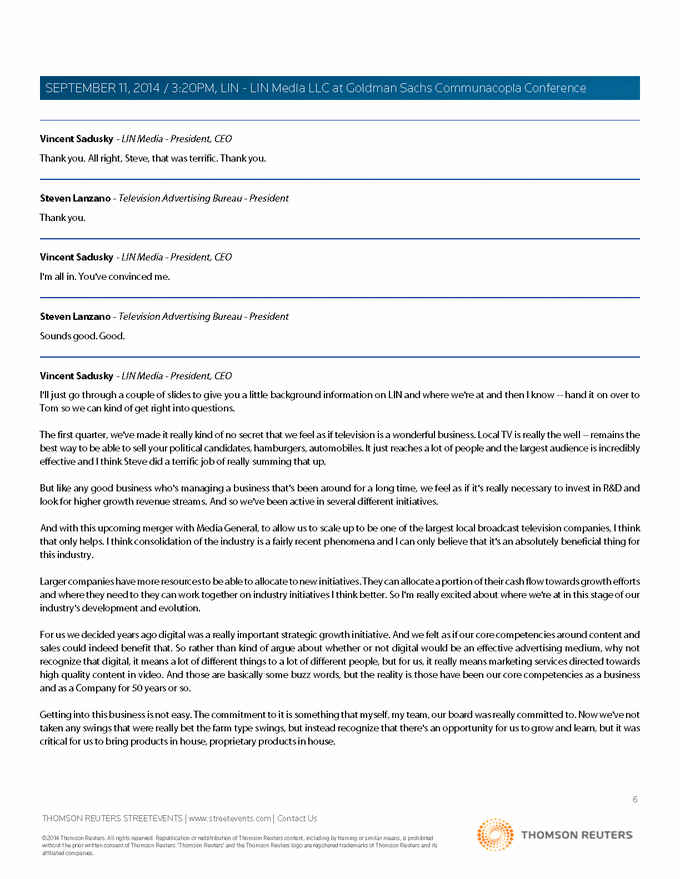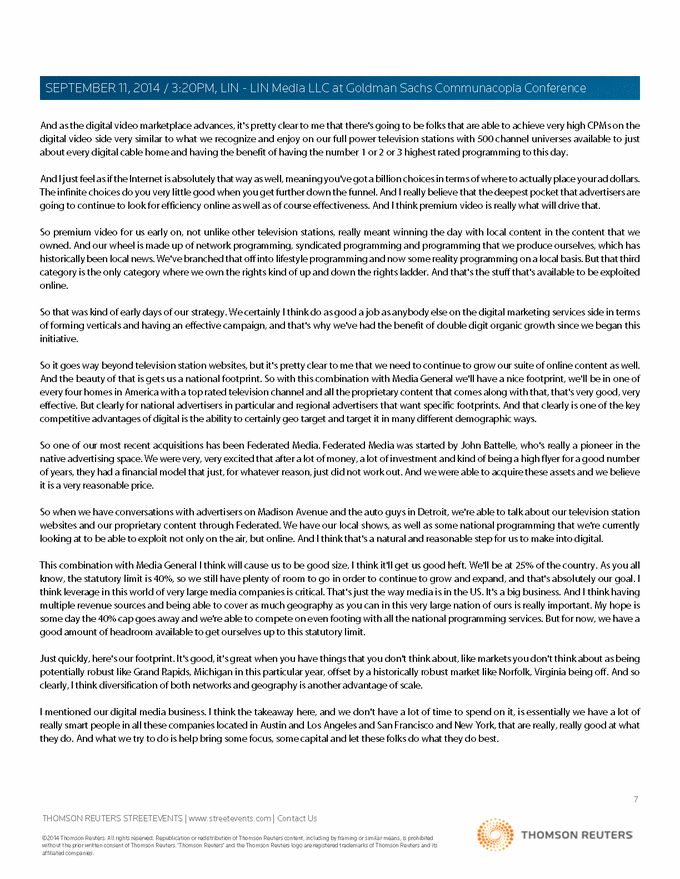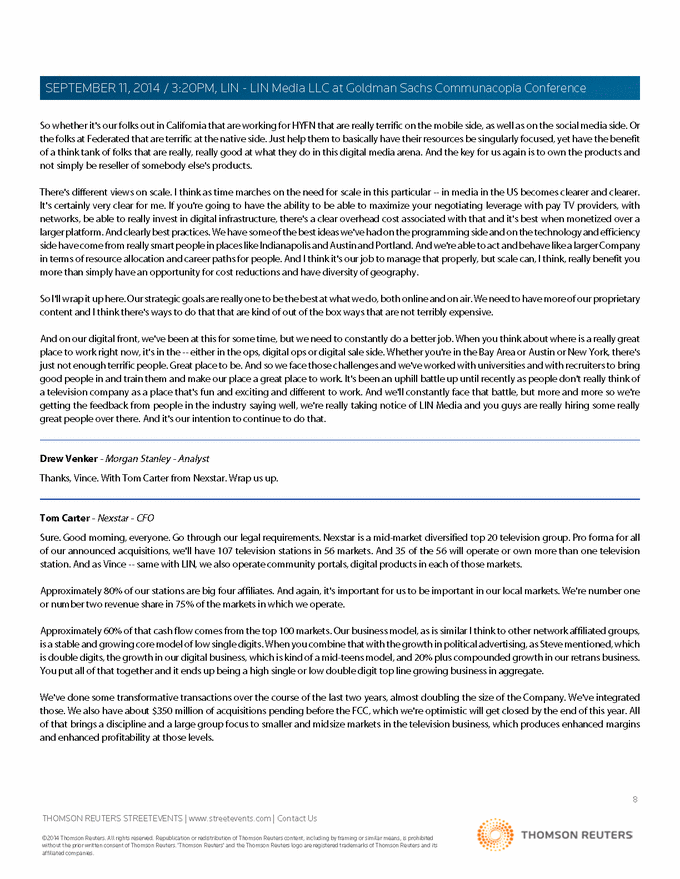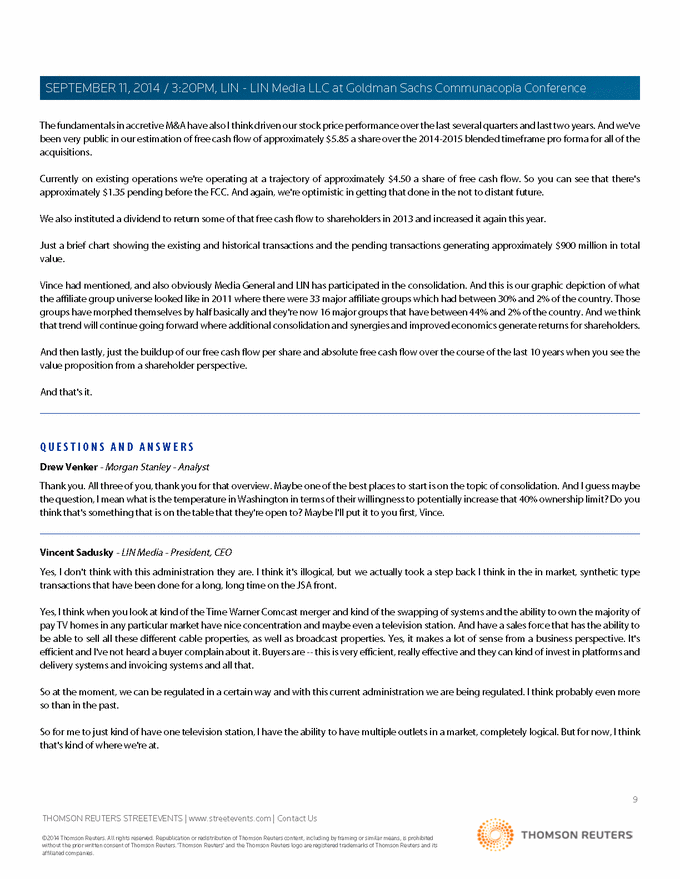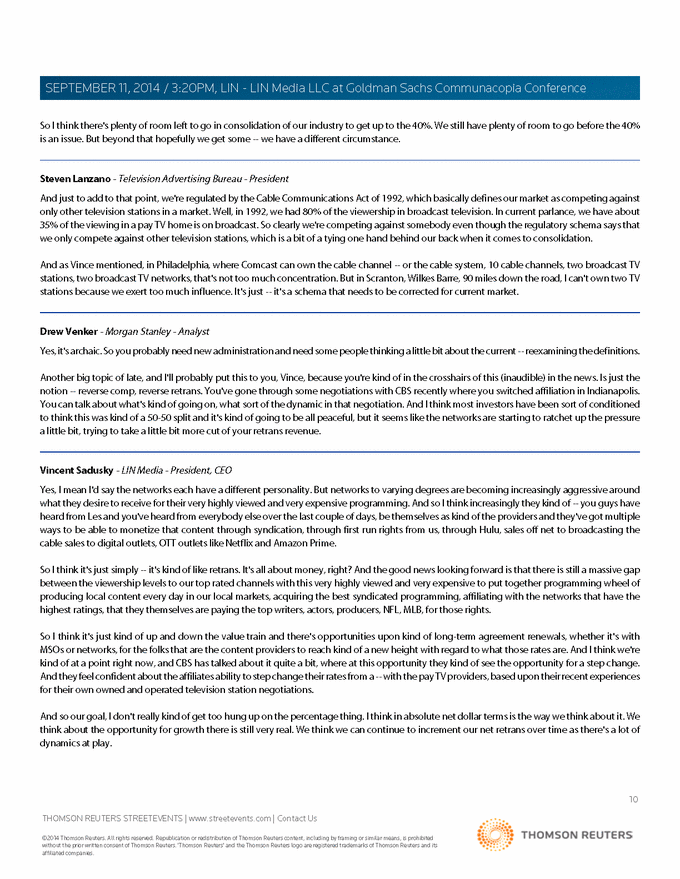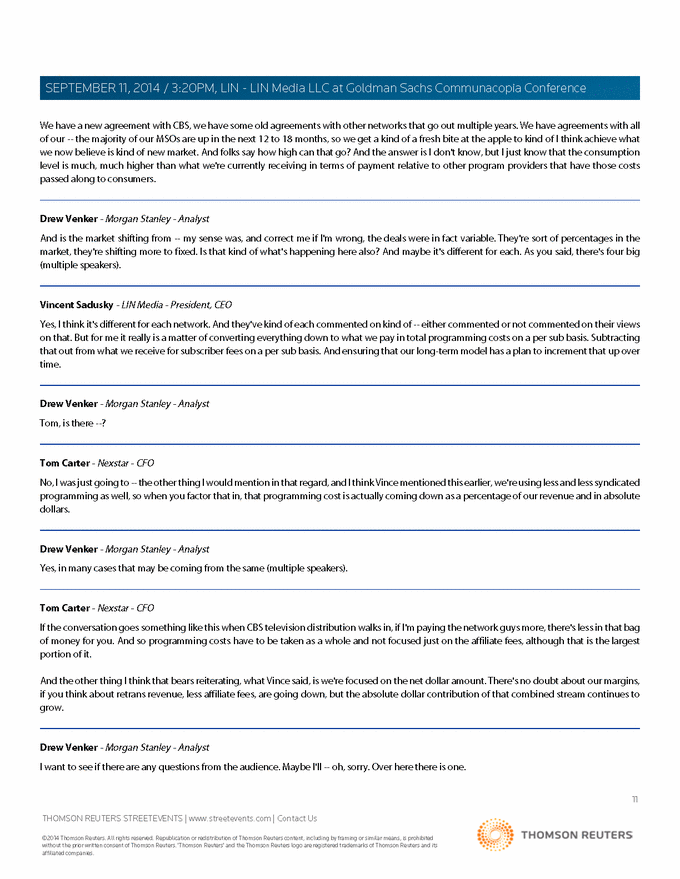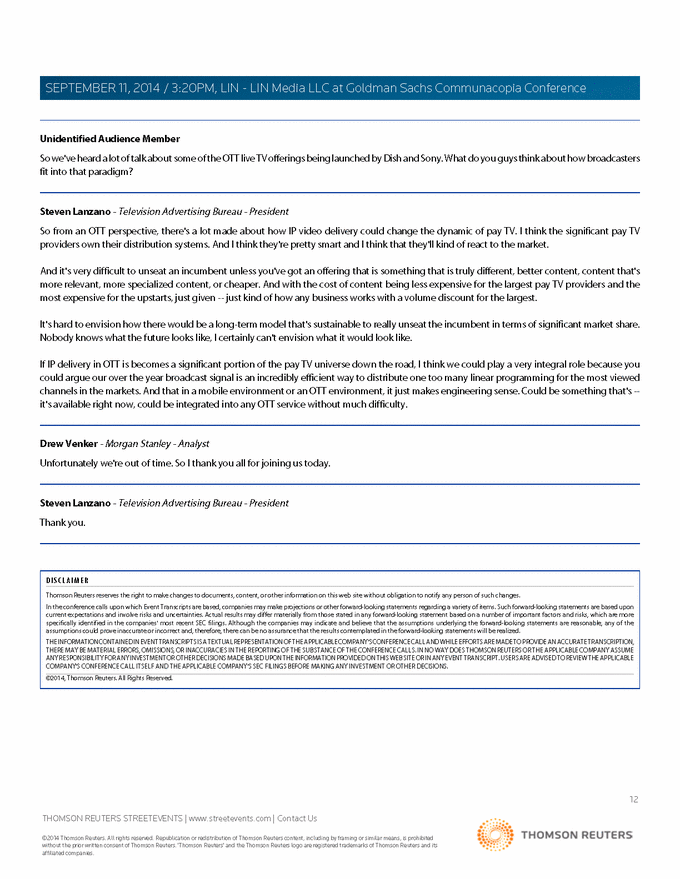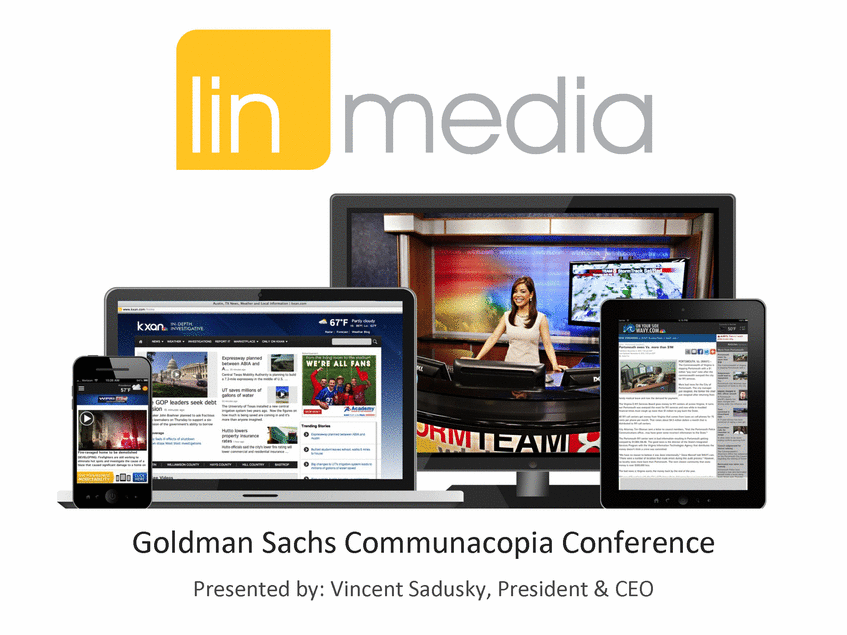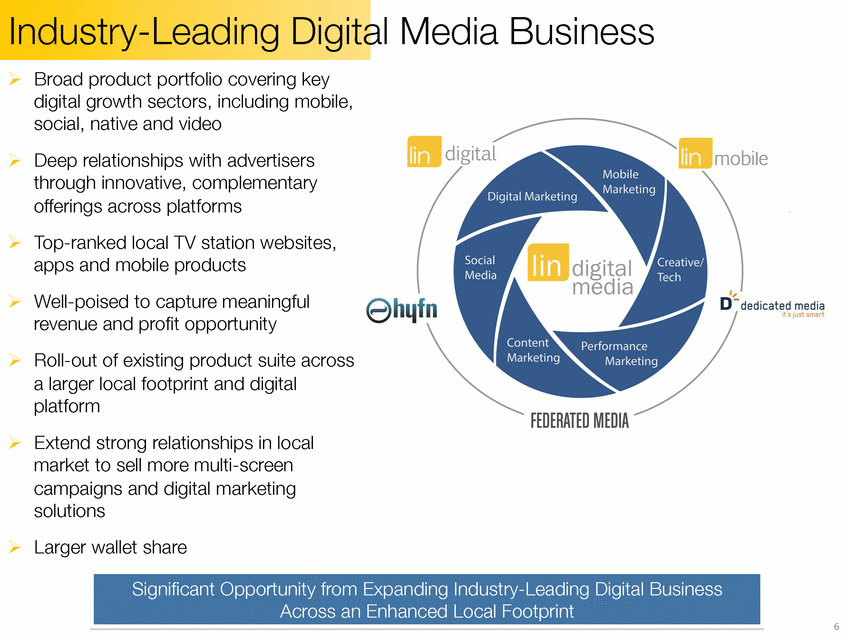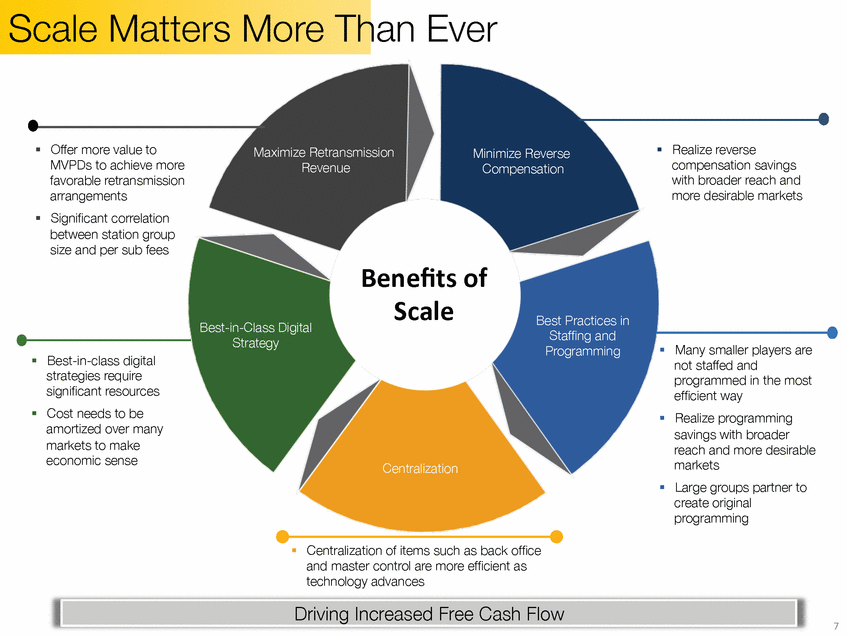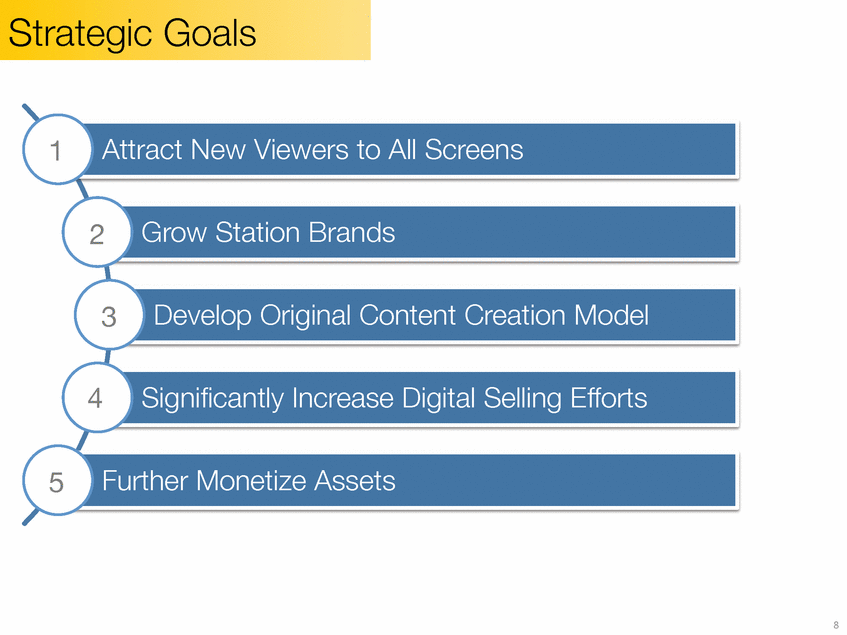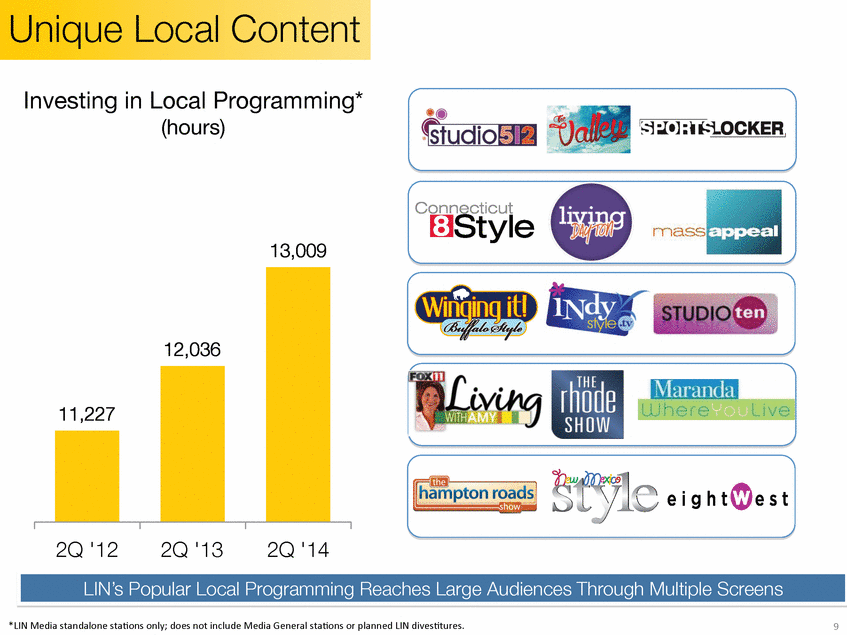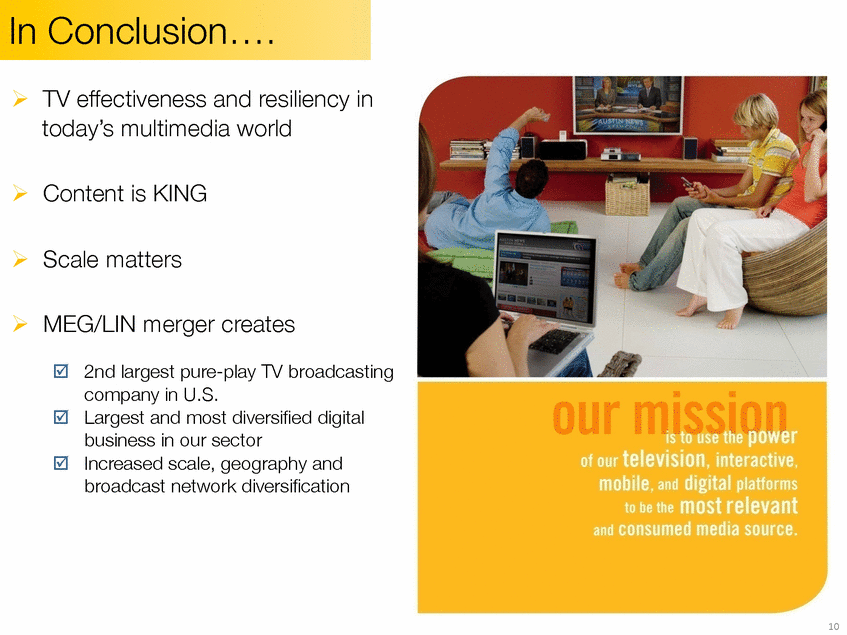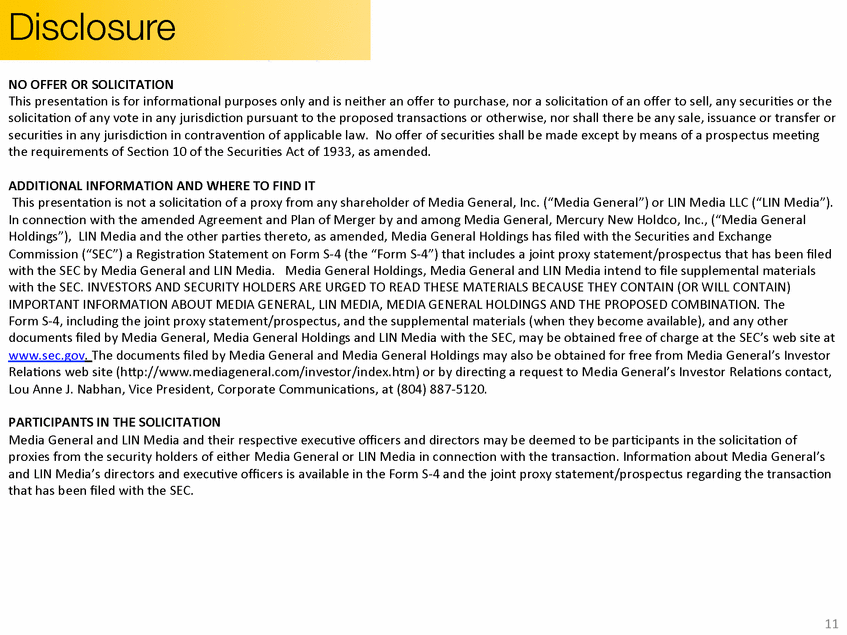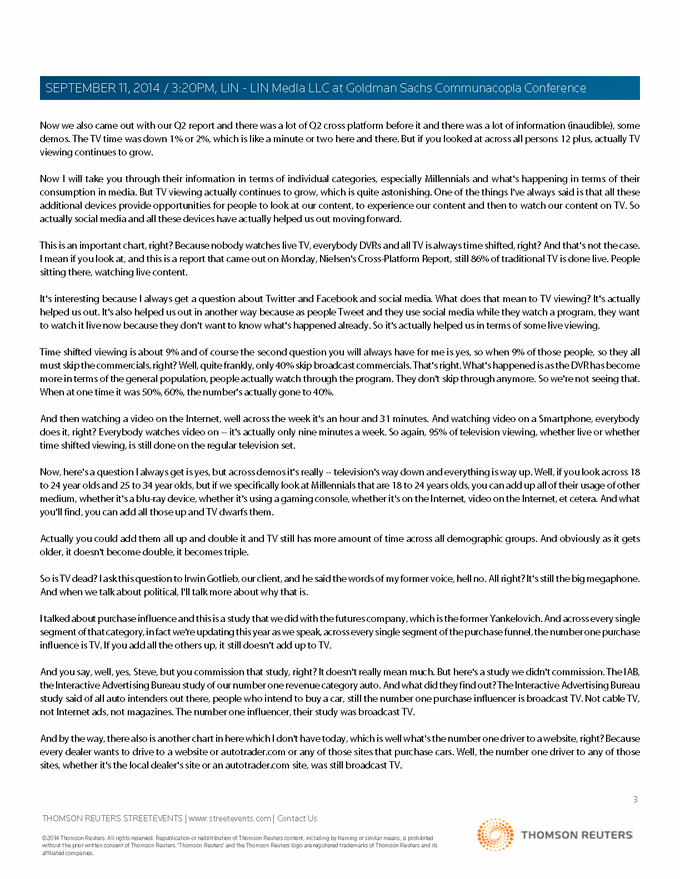
| Now we also came out with our Q2 report and there was a lot of Q2 cross platform before it and there was a lot of information (inaudible), some demos. The TV time was down 1% or 2%, which is like a minute or two here and there. But if you looked at across all persons 12 plus, actually TV viewing continues to grow. Now I will take you through their information in terms of individual categories, especially Millennials and what's happening in terms of their consumption in media. But TV viewing actually continues to grow, which is quite astonishing. One of the things I've always said is that all these additional devices provide opportunities for people to look at our content, to experience our content and then to watch our content on TV. So actually social media and all these devices have actually helped us out moving forward. This is an important chart, right? Because nobody watches live TV, everybody DVRs and all TV is always time shifted, right? And that's not the case. I mean if you look at, and this is a report that came out on Monday, Nielsen's Cross-Platform Report, still 86% of traditional TV is done live. People sitting there, watching live content. It's interesting because I always get a question about Twitter and Facebook and social media. What does that mean to TV viewing? It's actually helped us out. It's also helped us out in another way because as people Tweet and they use social media while they watch a program, they want to watch it live now because they don't want to know what's happened already. So it's actually helped us in terms of some live viewing. Time shifted viewing is about 9% and of course the second question you will always have for me is yes, so when 9% of those people, so they all must skip the commercials, right? Well, quite frankly, only 40% skip broadcast commercials. That's right. What's happened is as the DVR has become more in terms of the general population, people actually watch through the program. They don't skip through anymore. So we're not seeing that. When at one time it was 50%, 60%, the number's actually gone to 40%. And then watching a video on the Internet, well across the week it's an hour and 31 minutes. And watching video on a Smartphone, everybody does it, right? Everybody watches video on -- it's actually only nine minutes a week. So again, 95% of television viewing, whether live or whether time shifted viewing, is still done on the regular television set. Now, here's a question I always get is yes, but across demos it's really -- television's way down and everything is way up. Well, if you look across 18 to 24 year olds and 25 to 34 year olds, but if we specifically look at Millennials that are 18 to 24 years olds, you can add up all of their usage of other medium, whether it's a blu-ray device, whether it's using a gaming console, whether it's on the Internet, video on the Internet, et cetera. And what you'll find, you can add all those up and TV dwarfs them. Actually you could add them all up and double it and TV still has more amount of time across all demographic groups. And obviously as it gets older, it doesn't become double, it becomes triple. So is TV dead? I ask this question to Irwin Gotlieb, our client, and he said the words of my former voice, hell no. All right? It's still the big megaphone. And when we talk about political, I'll talk more about why that is. I talked about purchase influence and this is a study that we did with the futures company, which is the former Yankelovich. And across every single segment of that category, in fact we're updating this year as we speak, across every single segment of the purchase funnel, the number one purchase influence is TV. If you add all the others up, it still doesn't add up to TV. And you say, well, yes, Steve, but you commission that study, right? It doesn't really mean much. But here's a study we didn't commission. The IAB, the Interactive Advertising Bureau study of our number one revenue category auto. And what did they find out? The Interactive Advertising Bureau study said of all auto intenders out there, people who intend to buy a car, still the number one purchase influencer is broadcast TV. Not cable TV, not Internet ads, not magazines. The number one influencer, their study was broadcast TV. And by the way, there also is another chart in here which I don't have today, which is well what's the number one driver to a website, right? Because every dealer wants to drive to a website or autotrader.com or any of those sites that purchase cars. Well, the number one driver to any of those sites, whether it's the local dealer's site or an autotrader.com site, was still broadcast TV. 3 THOMSON REUTERS STREETEVENTS | www.streetevents.com | Contact Us ©2014 Thomson Reuters. All rights reserved. Republication or redistribution of Thomson Reuters content, including by framing or similar means, is prohibited without the prior written consent of Thomson Reuters. 'Thomson Reuters' and the Thomson Reuters logo are registered trademarks of Thomson Reuters and its affiliated companies. SEPTEMBER 11, 2014 / 3:20PM, LIN - LIN Media LLC at Goldman Sachs Communacopia Conference |
